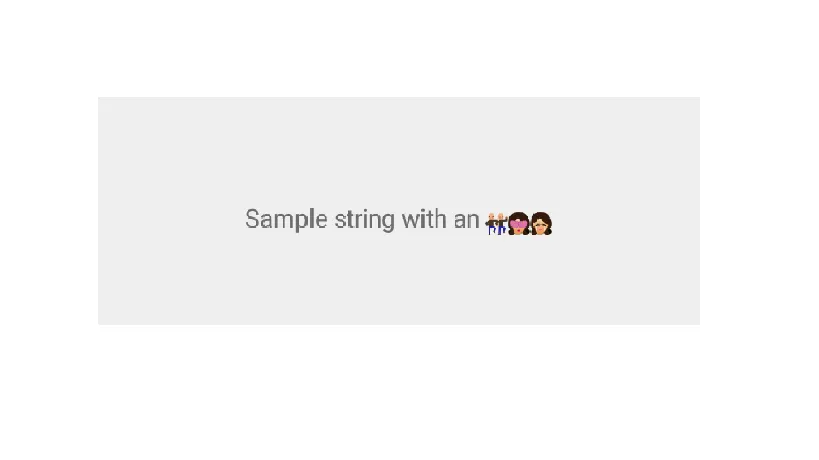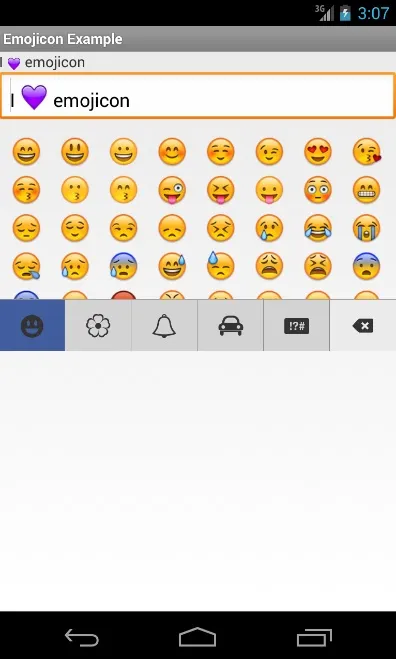我正在创建聊天应用程序,在其中从服务器获取表情符号(EMOJI)(图像URL)。
我通过以下代码将这些图像(表情符号URL)与文本一起在我的TextView中使用。
String stringWithHtml = "Sample string with an <img src=\"http://MY_SERVER.emoji.s3.amazonaws.com/cf68/5794d5f7895fa10a8f8e1350/imgList/5794d5f7895fa10a8f8e136a.png\"></img>" +
"<img src=\"http://MY_SERVER.emoji.s3.amazonaws.com/cf68/5794d5f7895fa10a8f8e1350/imgList/5794d5f7895fa10a8f8e135a.png\"></img>"+
"<img src=\"http://MY_SERVER.emoji.s3.amazonaws.com/cf68/5794d5f7895fa10a8f8e1350/imgList/5794d5f7895fa10a8f8e135b.png\"></img>";
Drawable drawable = Drawable.createFromStream(new URL(source).openStream(), "src name");
drawable.setBounds(0, 0, drawable.getIntrinsicWidth(), drawable.getIntrinsicHeight());
Spanned spannedValue = Html.fromHtml(stringWithHtml, drawable, null);
MY_TEXTVIEW.setText(spannedValue);
我在AsynTask中使用这些内容并获得了期望的结果,如下所示:
现在,我将所有表情符号(图片)存储在我的设备上,并想在我的TextView中将其与文本一起使用。
我的问题是:我们如何在TextView上使用设备(存储的图像)和文本?
我在SO上搜索过它,但没有获得预期的结果。请查看我访问过的以下链接
1. 第一个链接
2. 第二个链接
3. 第三个链接
4. 第四个链接
我已经使用了ImageSpan,但是出现了其他问题,我在SO上发布了问题在这里点击
请帮助我解决这个问题。谢谢


ImageSpan的帖子格式非常糟糕 - 它甚至没有表达任何对ImageSpan的使用,所以很可能被忽略了。 - Dioxin